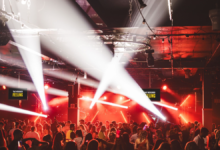The Shimmering World of the Disco Ball: Timeless Icon of Dance and Light

Discover the history, magic, and modern appeal of the disco ball. Learn how this sparkling icon transforms spaces, energizes parties, and remains an eternal symbol of celebration.
Introduction: Why the Disco Ball Still Captures Hearts
The disco ball is more than just a mirrored sphere hanging above a dance floor—it is a universal symbol of celebration, freedom, and rhythm. Wherever it appears, it immediately transforms a space, scattering light like confetti across walls, ceilings, and faces. From legendary clubs in the seventies to modern weddings, festivals, and home parties, the disco ball continues to capture attention and ignite joy.
What makes this reflective wonder so enduring is its simplicity paired with spectacle. A single spotlight on a disco ball can fill an entire room with kinetic energy. It doesn’t rely on complex technology or modern gadgets; instead, it thrives on timeless brilliance. Whether you grew up dancing under one or you’re discovering it today, the disco ball remains a sparkling reminder of how light and music connect us.
The Origins and Evolution of the Disco Ball
The story of the disco ball stretches much further back than most people imagine. While many associate it with the disco craze of the seventies, mirrored orbs had already appeared in the early twentieth century. In fact, early dance halls and jazz clubs used similar designs to create glittering atmospheres before the term “disco” even entered pop culture.
As music evolved, so did the presence of the disco ball. It became more refined, larger, and more central to the party experience. By the time disco music dominated the charts, the mirrored ball had become its visual signature. When John Travolta strutted across the floor in Saturday Night Fever, the disco ball wasn’t just decoration—it was part of the cultural revolution.
Even after disco music began to fade in mainstream popularity, the disco ball never disappeared. It survived because it was bigger than a single music genre. From rock concerts to electronic dance festivals, from roller rinks to modern art installations, it has continued to reinvent itself. That adaptability is why the disco ball remains timeless.
How a Disco Ball Works: The Science Behind the Sparkle
At first glance, the disco ball looks like a simple ornament. But the science behind its magic lies in its design. Dozens, sometimes hundreds, of tiny mirrored tiles are carefully arranged around a spherical surface. Each mirror reflects light at a slightly different angle, creating a scattering effect that fills the room with moving beams.
When paired with a spotlight, the disco ball becomes a kinetic masterpiece. The slow rotation of the ball ensures that the reflected beams are constantly moving, mimicking the rhythm of the music. Unlike strobe lights or lasers, this effect feels organic, almost hypnotic. The light never hits in quite the same way twice, which keeps the atmosphere dynamic and alive.
It’s also worth noting how universal the effect is. A small disco ball can energize a living room, while a massive one suspended in an arena can make thousands of people feel connected under its sparkle. That scalability makes it one of the most versatile light effects ever invented.
Why the Disco Ball Became an Icon
Symbols become icons when they go beyond their function, and the disco ball certainly did that. It became a cultural emblem of nightlife, freedom, and the joy of movement. Its reflective surface symbolized diversity—every tiny mirror reflecting something unique, yet all working together to create brilliance.
The disco ball also represented escapism. Stepping under its shimmer meant leaving behind the worries of the day. In clubs, it acted like a gateway to a new world where music and movement ruled. People didn’t just dance under a disco ball—they surrendered to its glow.
Even fashion embraced the icon. Sequined dresses, metallic shoes, and glittering makeup mirrored its sparkle, reinforcing its dominance in pop culture. And although the disco era ended decades ago, the disco ball remained etched in our collective imagination as a symbol of joy and expression.
The Disco Ball in Modern Celebrations
Today, the disco ball has moved beyond nightclubs and concert halls. It appears at weddings, birthday parties, corporate events, and even as home décor. Its versatility allows it to adapt to almost any setting, whether you’re going for vintage glamour or modern minimalism.
Event planners love it because it instantly creates atmosphere without overwhelming the space. A single spotlight and a mirrored ball can do the work of an elaborate lighting setup. It’s affordable, effective, and universally recognized as festive.
Interestingly, the disco ball has also become a statement piece in interior design. People hang them in living rooms, patios, or even bedrooms, not just for parties but as permanent art. This revival speaks to its enduring charm—it’s not just a relic of the past but a living symbol of creativity and fun.
Creative Ways to Use a Disco Ball

The beauty of the disco ball lies in its flexibility. While the classic use is hanging from a ceiling above a dance floor, creative minds have found countless new applications.
Some incorporate mini disco balls into table centerpieces for weddings, adding a subtle sparkle to each guest’s experience. Others use them in photo booths, where the light reflections create unforgettable backdrops. Outdoor festivals often suspend massive mirrored balls from cranes or trees, creating surreal landscapes of moving light.
For home use, smaller versions can sit on shelves, windowsills, or patios. Even without a spotlight, sunlight bouncing off a disco ball can create a dazzling effect in any room. Designers sometimes cluster several balls of different sizes together, creating a cascading galaxy of reflections.
Table: Traditional vs. Modern Uses of the Disco Ball
| Traditional Use | Modern Use |
|---|---|
| Hanging above dance floors | Home décor in living rooms or gardens |
| Nightclubs and discos | Wedding centerpieces |
| Roller rinks | Festival art installations |
| Concerts | Photography props |
| Theatrical productions | Retail and fashion displays |
Famous Appearances of the Disco Ball
Pop culture has cemented the disco ball in history through countless iconic appearances. Think about the massive ball in Studio 54, the legendary New York nightclub where celebrities, musicians, and artists partied under its glow. That disco ball wasn’t just a decoration—it was a cultural landmark.
Hollywood also played its part. Movies and music videos often feature shimmering mirrored orbs as shorthand for celebration and nightlife. Beyond Saturday Night Fever, artists from Madonna to Beyoncé have incorporated them into performances, stage designs, and visuals.
Even television embraced the icon. Dancing with the Stars awards its winners with a mirrored-ball trophy, directly linking success in dance with the disco ball’s eternal sparkle. That symbolism keeps the image alive across generations.
Quotes on the Magic of the Disco Ball
“A disco ball doesn’t just reflect light—it reflects emotion. Every sparkle is a reminder that joy is best when shared.”
“Under a disco ball, strangers become friends, and music becomes memory.”
These quotes capture why the mirrored sphere has remained so beloved. It’s not just about optics; it’s about emotion.
Frequently Asked Questions
What is the purpose of a disco ball?
The disco ball is designed to reflect light across a room, creating dynamic patterns that enhance the energy of music and dance. Its main purpose is to elevate the atmosphere of any celebration.
Are disco balls still popular today?
Absolutely. From weddings and festivals to interior design, the disco ball remains in demand. It has evolved from a nightclub staple to a versatile decorative piece.
Can I use a disco ball at home?
Yes, and many people do. Small disco balls can brighten up a living room, bedroom, or backyard patio. Even without a spotlight, natural sunlight can create beautiful reflections.
How do I hang a disco ball safely?
Use a secure hook or mounting system rated for the ball’s weight. Many modern disco balls also come with motorized mounts for safe rotation.
Is a disco ball only for parties?
Not at all. While it shines brightest in festive settings, it can also be used as décor, art, or even as a conversation piece in everyday spaces.
Conclusion: The Eternal Sparkle of the Disco Ball
The disco ball is more than a mirrored ornament—it’s a timeless cultural icon. Its history spans decades, its uses keep evolving, and its impact remains universal. Whether it hangs in a nightclub, glimmers at a wedding, or shines in your living room, the disco ball carries with it a promise: wherever it goes, joy follows.
Its light may scatter, but its meaning is clear. The disco ball isn’t just about reflecting beams—it’s about reflecting moments of connection, energy, and celebration.





